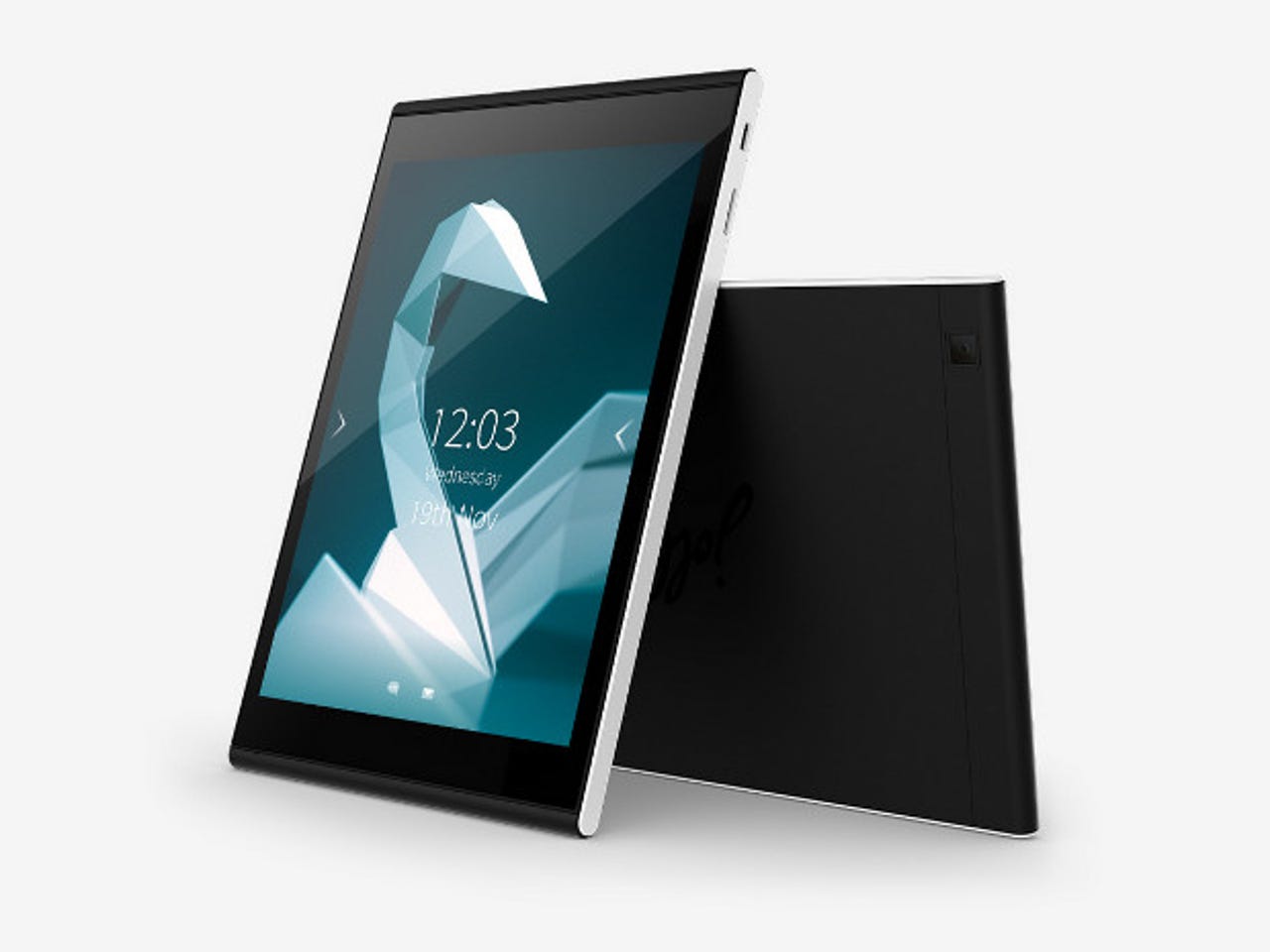Jolla's $1m assault on the tablet market: Is the world ready for a new kind of slate?


It's been a good week for Finnish mobile maker Jolla. Last Wednesday it announced a crowdfunding campaign to bring its first tablet to the market. Since then, the campaign has raised over $1.3m — triple the company's original goal.
Despite far outstripping its original funding goal of $380,000 within the first few hours after the Indiegogo campaign opened, Jolla COO Marc Dillon said the success of the campaign wasn't altogether unpredicted.
"I wouldn't say it was necessarily a surprise, but of course we are very pleased," said Dillon. "We set the initial goal just to ensure that we would have enough interest in the device and that we would be able to have a good dialogue with our community."
Read this
Jolla's decision to move into tablets only a year after launching its first handset came as a surprise to many when it was announced last week at Helsinki's startup event Slush. However, for Jolla, the move was a strategic decision to raise the visibility of its Sailfish OS, which is built upon the MeeGo platform abandoned by Nokia in 2011.
"One reason [for entering the tablet market] was to demonstrate Sailfish's capability on different mobile devices," Dillon says. "Putting Sailfish on a tablet allows people and companies globally to see that Sailfish really can scale and go into different kind of devices."
The Jolla Tablet will run an upgraded 2.0 version of Sailfish and is powered with a 64-bit Intel 1.8GHz quad-core processor. Core specifications are similar to Apple's iPad mini 3, with a 7.85-inch, 2048 x 1536 (330ppi) resolution display and 2GB RAM.
The price is also competitive, with Indiegogo backers being charged $209 for the device and Jolla anticipating the final retail price of the device will be $249. New funding targets have been added to the Indiegogo campaign this week too: if total funding reaches $2.5m, Jolla will begin offering HSDPA connectivity as an add-on for $30.
The company is hoping its Linux-based OS will be enough to set its tablet apart from fierce competition — as Dillon notes, there are 400 different Android tablets out there. Since it was released in late 2013, the operating system has seen nine major updates, more than 13,000 bug fixes, and 350 new features added. It's also compatible with Android apps, a useful boost for the fledgling platform.
Sailfish's multitasking capabilities are where the company sees its biggest differentiator from today's two dominant mobile operating systems, Android and iOS.
"We are going to be able to provide probably the best multitasking experience on any device," Dillon says. "It used to be the hope of Windows that people would be doing many things at once, but in fact on most devices, even desktops and laptops, people are just switching tasks most of the time." Jolla's solution has been building a gesture-based OS that shows all running apps in one single view. Applications are left open to enable interaction with more than one at a time and can be controlled from the multitasking view.
According to Dillon, the next version of Sailfish will debut with the Jolla Tablet, which is expected to ship in the second quarter of 2015.
Partnerships, partnerships, partnerships
Jolla was founded in 2011 by a group of former Nokia employees. Interestingly, their tablet announcement came only a day after the former mobile giant stated it would return to consumer devices with its own Android-powered N1 tablet.
For Dillon, who himself worked for 11 years at Nokia, the news came as a pleasant surprise: "It was very validating. It shows we are doing the right thing and the market is still looking for the best tablet."
Jolla's business model has been based on building partnerships from the start and its plans include licensing its operating system to device manufacturers — a goal that it's had since its inception but it has yet to announce any licensees.
"The way we have positioned ourselves is about independence, which means building coalitions of companies so it's not just one company having the dominant force in the mobile operating system area," Dillon says. "If you are an Android device maker then you are very deeply tied to Google's strategy and that makes it difficult to have any kind of independent strategy."
The company has already partnered up with several operators, distributors, and technology companies including the Russian Android app store Yandex and mobile operator 3 in Hong Kong. It will be announcing additional partnerships in the near future.
Jolla hasn't released any figures for sales of its mobile device, the Jolla phone, to date. Finnish national newspaper Helsingin Sanomatestimates that sales are probably in the tens of thousands, meaning the company understandably remains a very small player in the mobile market.
"We have been able grow the sales throughout the year by opening new markets. We just opened in Russia. We are steadily increasing and have good growth and sales by going from market to market," says Dillon. "In just a year, we have been able to get quite a good global footprint in the device sales and that has been very good for us." The Jolla phone is now available in 34 markets across Europe and Asia.
With its tablet device, Jolla is also expanding to the other side of the Atlantic for the first time with a US launch. The Tablet was originally available for Indiegogo backers in the EU plus Norway, Switzerland, the US, India, China, Russia and Hong Kong, but after a public vote on Jolla's website Australia and Canada were added to the list.
Getting people invested in the tablet process was one reason why the company decided to turn to crowdfunding. Jolla also lets users suggest new features for the OS, which the company prioritises depending on their popularity and so far, four of the eight most-voted-for features have been implemented to the Jolla phone.
New devices when the time is right
While it remains early days for the company, challenging the status quo and attracting consumers' attention to an alternative OS hasn't been an easy task for the newcomer.
"It has been difficult," Dillon says. "Android has such a huge penetration in devices, so even if you're offering something new, people don't understand there can be a choice. This is not only with consumers, but with operators and distributors as well. When you have a staff who understands how to sell the two dominant ecosystem platforms, it takes quite a bit in order to convince them to understand there is an alternative."
Dillon, however, believes operators and distributors want to offer their customers something different.
"The great thing with this tablet we are launching is that not only is it state of the art in software, it can also be state of the art in specifications and at a very competitive price. Now we are really able to compete with the big companies on what they have traditionally dominated - the supply chain," said Dillon.
More Sailfish devices are already on the company's roadmap: "When the market conditions and partnership combination is correct, then we will be ready to launch additional devices in the future," Dillion concluded.